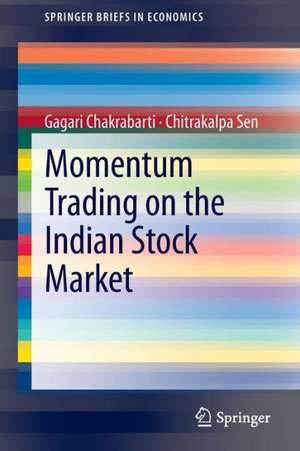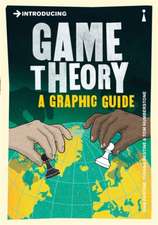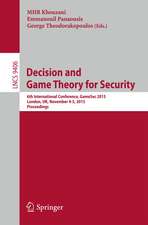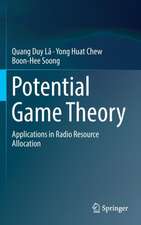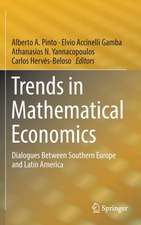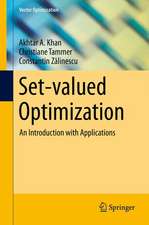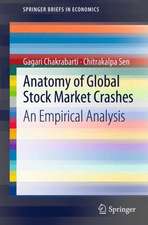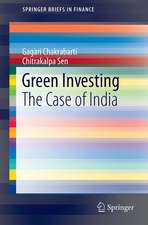Momentum Trading on the Indian Stock Market: SpringerBriefs in Economics
Autor Gagari Chakrabarti, Chitrakalpa Senen Limba Engleză Paperback – 11 apr 2013
Din seria SpringerBriefs in Economics
-
 Preț: 444.35 lei
Preț: 444.35 lei -
 Preț: 264.79 lei
Preț: 264.79 lei - 15%
 Preț: 462.51 lei
Preț: 462.51 lei -
 Preț: 47.33 lei
Preț: 47.33 lei -
 Preț: 353.14 lei
Preț: 353.14 lei -
 Preț: 273.32 lei
Preț: 273.32 lei -
 Preț: 376.04 lei
Preț: 376.04 lei -
 Preț: 379.09 lei
Preț: 379.09 lei -
 Preț: 380.07 lei
Preț: 380.07 lei -
 Preț: 377.35 lei
Preț: 377.35 lei -
 Preț: 379.09 lei
Preț: 379.09 lei -
 Preț: 376.59 lei
Preț: 376.59 lei -
 Preț: 408.27 lei
Preț: 408.27 lei -
 Preț: 379.09 lei
Preț: 379.09 lei -
 Preț: 383.28 lei
Preț: 383.28 lei -
 Preț: 378.54 lei
Preț: 378.54 lei -
 Preț: 377.95 lei
Preț: 377.95 lei -
 Preț: 340.23 lei
Preț: 340.23 lei -
 Preț: 380.25 lei
Preț: 380.25 lei -
 Preț: 378.12 lei
Preț: 378.12 lei -
 Preț: 376.04 lei
Preț: 376.04 lei -
 Preț: 376.04 lei
Preț: 376.04 lei -
 Preț: 379.68 lei
Preț: 379.68 lei -
 Preț: 381.00 lei
Preț: 381.00 lei -
 Preț: 375.23 lei
Preț: 375.23 lei -
 Preț: 376.80 lei
Preț: 376.80 lei -
 Preț: 378.54 lei
Preț: 378.54 lei -
 Preț: 377.57 lei
Preț: 377.57 lei -
 Preț: 376.04 lei
Preț: 376.04 lei -
 Preț: 378.92 lei
Preț: 378.92 lei -
 Preț: 375.62 lei
Preț: 375.62 lei -
 Preț: 379.09 lei
Preț: 379.09 lei -
 Preț: 353.67 lei
Preț: 353.67 lei -
 Preț: 342.14 lei
Preț: 342.14 lei -
 Preț: 375.45 lei
Preț: 375.45 lei -
 Preț: 379.09 lei
Preț: 379.09 lei -
 Preț: 377.35 lei
Preț: 377.35 lei -
 Preț: 344.86 lei
Preț: 344.86 lei -
 Preț: 377.35 lei
Preț: 377.35 lei -
 Preț: 345.89 lei
Preț: 345.89 lei -
 Preț: 377.57 lei
Preț: 377.57 lei -
 Preț: 343.83 lei
Preț: 343.83 lei -
 Preț: 378.12 lei
Preț: 378.12 lei -
 Preț: 379.48 lei
Preț: 379.48 lei -
 Preț: 379.48 lei
Preț: 379.48 lei -
 Preț: 380.07 lei
Preț: 380.07 lei -
 Preț: 375.45 lei
Preț: 375.45 lei -
 Preț: 445.33 lei
Preț: 445.33 lei -
 Preț: 378.54 lei
Preț: 378.54 lei
Preț: 345.06 lei
Nou
Puncte Express: 518
Preț estimativ în valută:
66.03€ • 71.70$ • 55.47£
66.03€ • 71.70$ • 55.47£
Carte tipărită la comandă
Livrare economică 22 aprilie-06 mai
Preluare comenzi: 021 569.72.76
Specificații
ISBN-13: 9788132211266
ISBN-10: 813221126X
Pagini: 128
Ilustrații: XV, 110 p. 58 illus.
Dimensiuni: 155 x 235 x 7 mm
Greutate: 0.19 kg
Ediția:2013
Editura: Springer India
Colecția Springer
Seria SpringerBriefs in Economics
Locul publicării:New Delhi, India
ISBN-10: 813221126X
Pagini: 128
Ilustrații: XV, 110 p. 58 illus.
Dimensiuni: 155 x 235 x 7 mm
Greutate: 0.19 kg
Ediția:2013
Editura: Springer India
Colecția Springer
Seria SpringerBriefs in Economics
Locul publicării:New Delhi, India
Public țintă
ResearchCuprins
Chapter 1: Introduction.- Chapter 2: Trends in Indian Stock Market: Scope for designing Profitable Trading Rule?.- 2.1. Introduction.- 2.2. Trends and Latent Structure in Indian stock market.- 2.3. Detection of Structural Break in volatility.- 2.4. Identifying Trends in Indian Stock Market: The Methodology.- 2.5. Trends and latent structure in Indian Stock Market: Bombay Stock Exchange.- 2.6. Trends and latent structure in Indian Stock Market: National Stock Exchange.- Chapter 3: Possible Investment Strategies in Indian Stock Market.- 3.1. Introduction.- 3.2. Investment Strategies in BSE.- 3.3. Investment Strategies in NSE.- Chapter 4: Investigation into Optimal Trading Rules in Indian Stock Market.- 4.1. Introduction.- 4.2. Literature review.- 4.3. Objectives of the chapter.- 4.4. Dataset.- 4.5. Finding the Optimum Trading Rule.- 4.6. How the TradingRule varies depending on the performance of the Economy.- 4.7. Finding the Optimum Trading Rule for BSE Indexes.- 4.8. Finding the Optimum Trading Rule for the NSE Indexes.- 4.9. Behaviour of Indexes before and after the Crisis.- 4.10. The Optimal Trading Rule in India: The epilogue.
Notă biografică
Dr. Gagari Chakrabarti completed her Masters, M.Phil and Doctorate in Economics at the University of Calcutta and is currently working as an Assistant Professor at the prestigious Presidency University in Kolkata, India. Her area of specialization is financial economics and the application of econometrics in financial economics. She has several national and international publications to her credit.
Chitrakalpa Sen is an Assistant Professor in Economics at Auro University, Surat. He completed his Masters in Economics at Calcutta University and his PhD at the West Bengal University of Technology. Dr. Sen’s area of interest is financial economics, econometrics and the non-linear application of econometrics in financial time series. He has presented his works at several national and international conferences and in journals.
Chitrakalpa Sen is an Assistant Professor in Economics at Auro University, Surat. He completed his Masters in Economics at Calcutta University and his PhD at the West Bengal University of Technology. Dr. Sen’s area of interest is financial economics, econometrics and the non-linear application of econometrics in financial time series. He has presented his works at several national and international conferences and in journals.
Textul de pe ultima copertă
This study is an exploration of the Indian stock market, focusing on the possible presence of momentum trading. One thing, however, should be noted. While it is true that momentum trading, which tends to generate speculative bubbles, may result in a financial market crash, its nature in contrast might depend on the nature of the economy itself. The study, while exploring the presence and nature of momentum trading on the Indian stock market in recent years, seeks to relate it to significant structural breaks in the Indian or global economy. To be precise, it outlines a potential correlation between the instability in the stock market and the speculative trading on the market, exploring the question of whether it is human psychology that drives financial markets. In the process, the choice of a significant structural break has been obvious: the global financial meltdown of 2007-2008 – a crisis that has often been referred to as the worst ever since the crash of 1929. While analyzing thenature of momentum trading on the Indian stock market with regard to the financial crisis of 2007-08, the study takes into account two major representatives of the market, the BSE (Bombay Stock Index) and NSE (National Stock Index), for the period 2005 to 2012. This study seeks to answer a few important questions. First of all, it tries to unveil the underlying structure of the market. In doing so, it examines the following issues: (i) What was the latent structure of the Indian stock market leading up to the crisis of 2007-08? Does the structure offer insights into designing profitable trading strategies? (ii) Is it possible to construct a profitable portfolio on the Indian stock market? (iii) Is there any profitable trading strategy on the Indian stock market? While exploring these issues, the study delves deeper, breaking the whole period down into two sub-periods, before the crisis of 2008 and after the crisis. The purpose of this division is to determine whether there has been any discernible change in the market structure since the shock.
Caracteristici
A comprehensive, analytical study (instead of being theoretical only) on momentum trading, which seeks to fill the void in the existent literature Links the theory of momentum trading with the financial crisis of 2007-08 Provides significant policy-based and theoretical implications Includes supplementary material: sn.pub/extras
